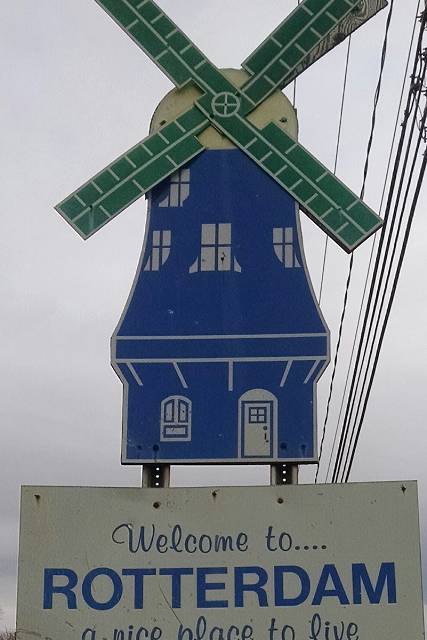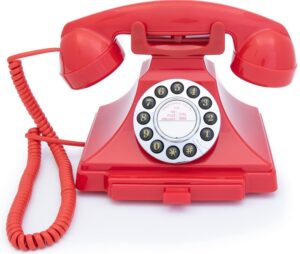“CHIN, neck, tittie,” and then you point to your chin, neck and chest. That’s how you pronounce Schenectady, said the lady who had grown up there. And no, she was not Dutch like just about everyone else, but Italian. Still, she effortlessly pronounced most street names from her childhood right: Guilderland, Apeldorn, Van Velsen, Amsterdam, Van Dyke, and the Netherlands Boulevard.
Some of these run just outside the city limits, into the neighboring town of Rotterdam. Most of the people there don’t see any difference. It used to be one big town, now there are two, but it is still one community anyway. Anything and everything there is Dutch. Rotterdam has many more of those Dutch street names that everyone drives by every day without giving it any thought: Van der Vere, De Witt, Van Cortland, Schuyler, Remsen, Veeder, Van Guysling, of the Van Gijseling family from Zeeland, and the Holland Road. Twenty minutes east is Amsterdam.
Rotterdam and Schenectady lie at the heart of America’s origins. History books talk about Nieuw Amsterdam and Piet Minuit who bought Manhattan for a song on behalf of the West India Company (WIC). But where America really started was well further upstream the Maurits River, later renamed North River, and eventually known as the Hudson. Fort Oranje, Beverwijck, where the Mohawk River flows into the Hudson.
ALBANY is there now, state capital of New York, right next to Schenectady and Rotterdam. The city of Rensselaer, named after the man from Nijkerk who founded America, Inc as its first CEO from the WIC headquarters in Amsterdam. Places like Colonie, once intended to serve as a Dutch colony, Voorheesville, named after the family from Drenthe, Coeymans, in memory of miller Barend Kooijmans from Utrecht.
This was where the Dutch bought large tracts of land from Mohawk tribes, mostly peacefully, in part because the local Indians had no concept of land ownership. Nature was something you leased, so to speak, you had it on loan, but its owner was nature itself, the Great Chief in heaven. Those Dutchmen with their bullets and their welcome barrels of firewater, who paid handsomely for the beaver pelts that the Indians hunted, they could take over the lease for a while if they insisted, as far as the Mohawks were concerned. And so the land, lot after lot, passed into Dutch hands.
AMSTERDAM had no direct connection to the ocean, there was no North Sea Canal. You had to leave the IJ, sail up the Zuiderzee and then pass through the channel at Texel onto the North Sea. You sailed faster into the ocean from Rotterdam, at the point where the Maas and Rhine rivers emptied into the sea side by side. It’s portrayed in the US Capitol Rotunda, a large painting of the Leiden passengers of the Mayflower, ready to depart from Delfshaven. Rotterdam was therefore often the last piece of Europe that emigrants saw on their way to America.
This was the reason for calling that town in the state of New York Rotterdam, a tribute to Holland’s last farewell. Where? Well, behind yon’ pine trees, or as the Mohawks said, skah neh tati. The Dutch thought that was a nice phrase, which is why they never Dutched it. At least, not on the west side of Albany. On the other side of the city there was also a dense pine forest, and that one they officially translated to Grenenbos. It is now spelled Greenbush, but it means the same as Schenectady.





